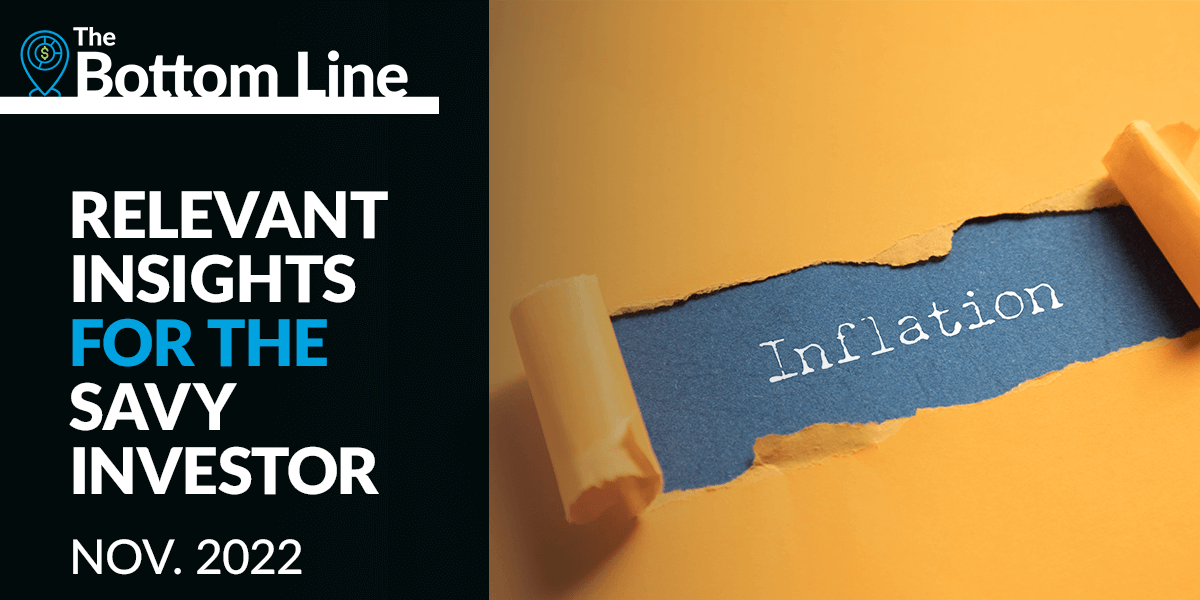

Economic Growth Is Resilient, and Inflation Remains Sticky
The economic outlook has transformed in just the past few weeks. Since the beginning of the year, there have been several economic releases that not only have come in stronger than anticipated but were also well above the weakening trend already underway. Most notable was the jump in payrolls for January; it was a blockbuster 517,000, well above the 291,000 average of the previous three months (Chart 1).

The retail sales report also had a colossal gain of 3%, more than offsetting the retreat of the previous two months (Chart 2).

Then, the January consumer price index (CPI) report showed the monthly change was up 0.5%, far stronger than the 0.2% average increase of the previous six months. This helped slow the yearly change in CPI, which fell just 0.1% in January to 6.4% year over year (Chart 3).

Over the previous six months, the annual decline was more than 0.4% each month (from 9.1% to 6.5% in December).
This about-face in the data has economists wondering if they need to rethink their forecasts for the economy and Federal Reserve action. But it is hard to draw firm conclusions from data around year-end because it tends to be more volatile and unreliable than most other months of the year. This data is seasonally adjusted, a statistical adjustment that tries to eliminate the effect of seasonal or calendar influences. For example, with retail sales, the underlying data is very volatile (Chart 4), but themes can be found. January always has a significant decline from the strong holiday sales in December.

Statisticians look at the history of those changes and adjust for the current data. So the unadjusted decline in the January data was $120.9 billion, a drop of 16.2%. But the decline was less severe than historical declines, so the seasonally adjusted data showed a 3% increase. This works well when the same shopping behavior repeats itself.
But therein lies the problem. Shopping habits have been changing, which gets amplified when seasonal adjustments are applied. For example, this past holiday shopping season saw an extreme change. In past years, holiday shopping centered on late November and December; this past season, it shifted to October and January. Shoppers were worried about a repeat of the 2021 inventory problems, which left many shelves empty around the holiday. So shopping was robust this past October (helped by big sales at Amazon and other retailers)(Chart 2). Then, sales declined in November and December (severe weather may have helped reduce sales). Also, the increased use of gift cards is having an impact on retail sales. When a gift card is redeemed, it counts in the retail sales report. So when people receive a card as a holiday gift, they tend to redeem it in January, boosting sales. Again, weather, which was very mild in January, may have added to the strength, especially with restaurants.
What does all this mean? The economy is slightly stronger than previously thought, and the disinflationary trend is waning. The Fed will need to keep interest rates higher for longer, which means the risk of a recession this year remains elevated; we place the probability of a recession in the next 12 months at 70%.
MARKET TRENDS
Volatility has returned in February, with a batch of sticky inflation readings and hawkish Fed commentary leading investors to adjust interest rate expectations closer to our higher for longer outlook. Though we are now likely in the later stages of the equity bear market, we think elevated recession risk and corporate earnings revisions could be the catalysts for additional declines before conditions for a more sustainable rally in stock prices fall into place over the second half of the year.
LABOR
January’s surprise blockbuster payroll gain of 517,000 and a new cycle low in the unemployment rate (3.4%) show the resiliency of labor demand, which the Fed is trying to curtail by raising interest rates.1
THE FED
With the pace of disinflation waning and labor growth remaining resilient, the market is beginning to believe the Fed’s pledge to keep the federal funds rate higher for longer.2
HOUSING
Existing home sales remain in the doldrums, declining for 12 straight months to 4 million units (annual rate), the lowest level since 2010.3
DEBT CEILING
The debate over raising the debt ceiling will continue for several months as each political party negotiates planned spending for the next fiscal year.4
INFLATION
The rate decline of the yearly change in inflation is slowing due to the torrid upward pace of housing costs and services requiring a great deal of labor.5
COMMERCIAL REAL ESTATE
Credit concerns regarding office space are beginning to grow, as businesses are experiencing a weaker-than-expected response to returning to work, leading to soaring vacancies.6
Sources
1. Bureau of Labor Statistics, January 2023
2. The Federal Reserve, February 2023
3. Commerce Department, January 2023
4. US Treasury, January 2023
5. Bureau of Labor Statistics, January 2023
6. Wall Street Journal February 22, 2023
Index Definitions
CPI: The Consumer Price Index (CPI) is a measure that e xamines the weighted average of prices of a bask et of consumer goods and services, such as transportation, food and medical care.
Important Information
The information presented does not involve the rendering of personalized investment, financial, legal, or tax advice. This presentation is not an offer to buy or sell, or a solicitation of any offer to buy or sell any of the securities mentioned herein.
Certain statements contained herein may constitute projections, forecasts and other forward-looking statements, which do not reflect actual results and are based primarily upon a hypothetical set of assumptions applied to certain historical financial information. Readers are cautioned that such forward-looking statements are not a guarantee of future results, involve risks and uncertainties, and actual results may differ materially from those statement. Certain information has been provided by third-party sources and, although believed to be reliable, it has not been independently verified and its accuracy or completeness cannot be guaranteed.
Any opinions, projections, forecasts, and forward-looking statements presented herein are valid as on the date of this document and are subject to change.
All investing is subject to risk, including the possible loss of the money you invest. As with any investment strategy, there is no guarantee that investment objectives will be met and investors may lose money. Diversification does not ensure a profit or protect against a loss in a declining market. Past performance is no guarantee of future performance.
City National Rochdale is a registered investment adviser and a wholly-owned subsidiary of City National Bank. City National Bank provides investment management services through its sub-advisory relationship with City National Rochdale.
Investing in international markets carries risks, such as currency fluctuation, regulatory risks, and economic and polit-ical instability.
Investing involves risk, including the loss of principal.
Non-deposit investment products are not FDIC insured, are not bank guaranteed, and may lose value.
Stay Informed.
Get our Insights delivered straight to your inbox.
Put our insights to work for you.
If you have a client with more than $1 million in investable assets and want to find out about the benefits of our intelligently personalized portfolio management, speak with an investment consultant near you today.
If you’re a high-net-worth client who's interested in adding an experienced investment manager to your financial team, learn more about working with us here.
